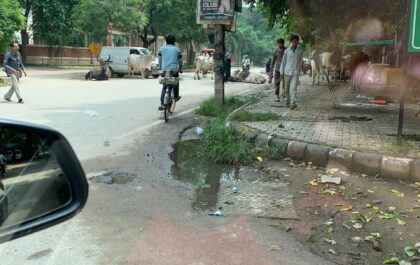To understand the debate between single point connection and the multi point connection, it is essential to first understand what these terms mean. In single-point connections, the electricity
department provides one connection to the society and the internal distribution of electricity amongst the residential unit is handled by the developer or the society’s association through prepaid meters.
Under the multi-point connection, the electricity department directly supplies power to individual flats. In the recent times, the electricity department has enacted the electricity supply through prepaid meters whereas in the past it used to carry out the billing in the form of postpaid meters. While some residents prefer electricity directly from the department, residents of several societies in the city are in favor of single-point connections. They fear that if individual meters are installed, the developer will no longer take care of the power distribution to the common areas. Due to lack of clarity from the department, residents also fear that under the multi-point system common utilities like gym, club, etc will fall under the commercial tariff, while facilities like lifts, water pumps or common area lighting will be categorized under household tariff. Most residents are unwilling to bear the cost of dual meters as well.
Allocation of fixed charges, over and above of what is being paid currently, also concerns some residents. The issue of allocation of common area electricity, which shouldn’t be different for owners of same sized flats, has also been raised by the residents.
The debate also arises at the fact that when the residents are not being charged for maintenance from electricity meter, many residents portray unwillingness to maintain the record of power supplied by the electricity department as well as supply from the generator sets (in case of a power failure) and the separate payment for maintenance charges. With single-point connections, residents can keep a track for one payment whereas under multi-point connection they have to maintain 3 different recharges.
The seamless maintenance and functioning of essential common area services becomes difficult as some residents often do not pay for these once they have their own connections. On the other hand, few residents have also said some residents’ bodies/developer collect a lot of ‘hidden charges’ under the single-point system. To avoid the default of payment for maintenance charges some developers also offer the same tariff as with electricity department and waive off the distribution losses.
The debate is a two edged sword and seems to be endless. The final decision should be made after a careful analysis of the pros and cons, scrutinizing and implementing the one that outweighs the other.
Popular Stories
Football Tournament @Princeton
More Than a Festival: The Art and Power of Durga Puja
Personality of the Month- ‘Dr Usha Mediratta’
Stray Cattle Menace In Front of Galleria
The Chronicles of Malibu Towne: A Mosquito’s Tale
“Senior Living Is Not An Old Age Home” say Mr & Mrs Bose
Recent Stories from Nearby
- Promises Repair of Broken Park Walls, Installation of Boom Barriers, Deep Cleaning of Drains… Among Other Things January 30, 2025
- Anand Niketan Club’s Grand New Year’s Eve Bash January 30, 2025
- Residents Come Together for a Night of Fun and Festivity January 30, 2025
- Rising Incidents of Harassment by Transgender Groups Raise Concerns in Delhi NCR January 30, 2025
- From Banana Races to Hurdles: ANRWA Sports Meet Had It All January 30, 2025






